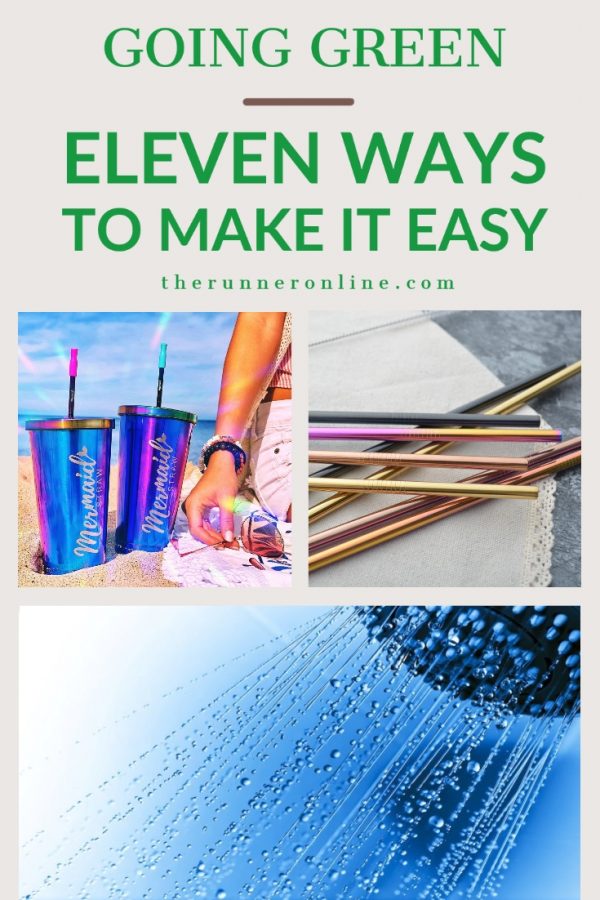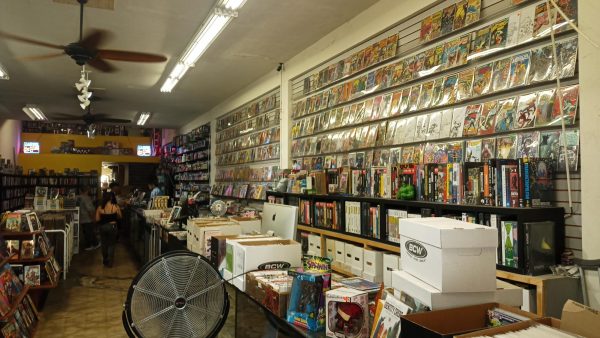Going green: Eleven ways to make it easy
Images were obtained from Mermaid Straw, Turtles Talk Back, and Lifehacker’s website.
March 28, 2020
Updated March 28.
Going green seems to be a trend for college students, but is anyone really making any changes? Although we are not directly noticing the effects of climate change, the planet is currently suffering from humanity’s irreversible acts. If humans can change anything, it is the way we live our daily lives.
College students live busy lives with classes in the morning that often run into the afternoon, clubs they are encouraged to join, and homework that takes up hours of their sleep. Many don’t take the time to think about their carbon footprint and the waste they are creating, nor where it is going. They may flush products that should not be flushed or not put the recyclables in the recycling bin because of convenience.
“The average college student produces 640 pounds of solid waste each year, including 500 disposable cups and 320 pounds of paper,” states the College and University Recycling Resources article.
Aside from paper and disposable tableware, college students create quite a bit of waste when it comes time to move out of their apartments and dorms at the end of semester. Students throw out food, clothes, and furniture to avoid bringing too much back to their homes.
Although many students aren’t aware of the waste they are creating, some students are starting to make the switch. Reusable coffee cups are rewarded with a discount on coffee at places like Starbucks and the Runner Café, though this program has been temporarily discontinued due to the coronavirus to avoid spreading germs. Thankfully, Starbucks will still honor the discount as long as you bring your reusable cup along.
Metal straws make people feel better than plastic straws because of the toxicity and harm to wildlife plastic straws can bring. I believe it was a heartbreaking video of a turtle with a plastic straw stuck in its nose that made so many people passionate about this issue. It was the video of the turtle suffering due to humanity’s garbage that sparked global discussion; the discussion only seems to have continued growing from there. Some companies are making it almost too easy to access reusable straws and utensils once consumers have been informed of their options.
An online shop, Turtles Talk Back, gives away free metals straws as long as you pay the shipping. The more straws you buy, the cheaper the shipping. There are shops like Anthropologie that make reusable eating utensils look stylish through its clever design of making three utensils fit perfectly together as one. Though, there products do come shipped in plastic at this time, so they aren’t entirely green yet.
Mermaid Straw offers a wide range of metal and glass straws, portable flatware, and drinkware. Best of all, they donate a portion of every purchase towards ocean conservation. To show their dedication to the cause, they are even offering 10% off coupons to CSU Bakersfield students and faculty; just use the code ‘CSUB’ at checkout.
The biggest reasons some college students aren’t choosing to make the switch is due to a lack of information, convenience, and accessibility. Plastic is everywhere, leaving activists unsure if companies are making an effort to find an alternative for their products.
“69% of millennials surveyed expressed genuine interest in the environment, but also admitted to a lack of personal involvement in green-related activities,” an Ad Age survey of millennials on green brands concluded.
It is highly plausible that many of these people are unaware of the resources out there. They may also not be willing to travel to find farmers’ markets or to shop at pricey sites that typically hold more eco-friendly products. In turn, these niche places reveal a lack of accessibility.
Sustainability experts Angie De Soto and Merry Rankin, in the article, “Going Green at School,” state that the production of vegetables and legumes may globally decrease by 35% by the year 2100 if greenhouse emissions continue at current rates. Along with a decline in food production and variety comes a decline in health.
“Climate Change and Health,” an article produced by the World Health Organization, states that around 250,000 deaths may occur by 2030-2050 because of diarrhea, heat stress, malnutrition, and malaria.
Diseases may also increase due to changes in the atmosphere and increases in temperature. Our waste and carbon footprint also affect our coral reefs, weather conditions, and biodiversity. This signifies just how important it is that we all do our part to help protect the environment.
Going green may not seem as accessible as it should be, but making little changes is a big step in the right direction. During these shifts, it is important to remember that being sustainable is a learned behavior. This means you must be conscious when making decisions, as it will not necessarily be instinctive. These may seem like obvious changes to some, but they are still changes many people don’t follow.
A few things you can do to reduce your impact on the environment include:
- Invest in reusable water bottles and utensils (straws, cups, Tupperware).
- Buy reusable bags and keep them readily available. This decreases your need to buy plastic and paper bags at checkout.
- Buy products with less packaging. This could include using soap bars, purchasing bulk items, picking your own potatoes instead of buying a whole sack, or switching to menstrual cups instead using disposable pads and tampons. Lush is great for soap, shampoo and conditioner bars. Grocery stores like Sprouts and Trader Joe’s have many items in bulk, including fruits, nuts, grains, and chocolate. Menstrual cups can be found in the in the feminine hygiene aisle of local stores, or you can order brands like Diva Cup on Amazon.
- Buy and rent ebooks or used books instead of choosing to buy new ones.
- Avoid printing when possible. Unless you must print a paper to turn in to class, try going digital with ebooks, online recipes, and more. If you must print for yourself, try using the back sides of papers that have already been printed on. Make your bills and statements paperless, and take notes by hand or digitally.
- Reduce your water usage. This can be done easily by turning off the water when brushing your teeth, take a shower rather than a bath, and limiting your shower time. The U.S. Environmental Protection Agency reveals that a full bathtub uses about 70 gallons of water, whereas a five-minute shower uses 10 to 25 gallons. Ensure each load of laundry is full.
- Use less electricity. You can simply unplug devices when they are not in use. You can also reduce your usage by washing your clothes in cold water, and turning your dryer setting to tumble with no heat, or just hanging your clothes up to dry.
- Buy secondhand when possible. This could include clothes, electronics, books, and furniture. You may even give away or trade items with people to avoid creating waste. You can find many secondhand items at thrift stores or Facebook groups like CSUB Student Swap.
- Carpool with a friend, take the bus, bike, or walk to class. This will allow you to greatly reduce the amount of auto emissions produced.
- Quit smoking. Aside from cigarette butt littering, cigarette smoking pollutes our environment. The World Health Organization acknowledges that growing tobacco “involves substantial use of chemicals – including pesticides, fertilizers and growth regulators” that can affect drinking water and exhaust soil nutrients.
- Recycle. Be conscious about where you’re putting your trash, paper, plastic, cardboard, and metal cans. Plastic bottles can typically be repurchased. Batteries are also important to note because they are “considered hazardous waste in California,” according to CalRecycle. It is important that you dispose of batteries by recycling them or taking them to a household hazardous waste disposal facility, a universal waste handler, or an authorized recycling facility. Visit CalRecycle.ca.gov to find battery waste collectors near you. However, if you are unsure whether something is recyclable, you’re better off throwing it away. If recycling plants have to spend too much time pulling non-recyclables from the piles, entire sections will be tossed. As you may have once heard in childhood, “When in doubt, throw it out.”








